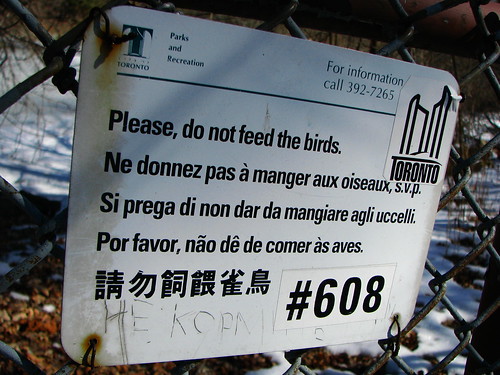I’ve mentioned before that I find learning a third language using my second language much easier than using my native language. Currently, I am improving my Italian by using resources written in French rather than English. Switching from French to Italian takes much less effort than switching from English to Italian, and the same is true regarding German, so I’m reluctant to say it’s merely because of the genetic relatedness between French and Italian. Granted, learning two Romance languages together is probably easier than learning two unrelated languages for most people, but for me it’s more of a question of my second language having priority over my native language when other foreign languages are involved.
Some people discourage learning two languages together, especially languages that are closely related such as Spanish and Portuguese, because they believe that learners will get too confused. That’s quite insulting to learners who are quite capable of learning several languages at once, or using one language to learn or improve their knowledge of another. Perhaps some people do confuse certain similar words, but once an advanced level is reached, everything sorts itself out and humans are able to speak several languages on a daily basis. Multilingualism, not bilingualism and certainly not monolingualism, is the norm throughout the world and is highly beneficial to the health of the human brain, so shouldn’t we all strive to be polyglots?

Once you’ve gained a sufficient level in one foreign language, all of the others that follow are increasingly easier and easier to learn. You’ve already learned how to learn a language and familiarize yourself with the grammar, so now you can focus on learning useful vocabulary and collocations for communication and trying not to get stumped by polysemous or homonymous words.
Italian through French
At first glance, Italian seems a million times easier than French, especially regarding pronunciation. There are only seven vowels and every word is pronounced how it is spelled. Compared to the 15 or so vowels in French, plus the nasals and numerous silent letters, I am in heaven. I don’t have to wonder why in the world a singular noun such as œuf ends in /f/ but the plural œufs contains no consonant sounds at all because Italian pronunciation is not a cruel joke against foreigners, unlike that of French. Italian does have some irregular plural forms, but they are still pronounced exactly as they are spelled. Uomo (man) becomes uomini (men) in the plural but at least -ini isn’t silent for no darn reason!
Articles are slightly more complicated (what’s with lo?) but the possessive adjectives and pronouns are the same. No new forms to learn. Changing from spoken to written Italian is much easier thanks to the phonetic spelling. I never have to worry about if I need to add that extra -e or -s for feminine or plural as in French (they’re silent! how mean is that?) because in Italian, the final vowel simply changes according to person and gender so there is no confusion.
Verb conjugations are also easier. A bunch of v’s? Imperfect! An r in the stem? Future or Conditional! Too many s’? Imperfect subjunctive! Just as in French, the preterit isn’t used in speech (except in southern Italy) so I can spend more time on recognizing the forms instead of producing them. Subject pronouns are rarely used with verb conjugations, which takes some getting used to since they are always required in French.
Some phrases are very similar – passer une nuit blanche / passare la notte in bianco (to have a sleepless night) – while others can be deceiving: le monde entier / tutto il mondo (the entire world) compared to tout le monde / tutti (everyone). Of course, idioms between languages are often different and need to be learned individually. Yet it is these subtle differences between close languages that I find the most interesting and spend most of my time learning. Both French and Italian came from vulgar Latin, so how and why did the languages change over time and how can we use that to our advantage in learning both languages? The Loom of Language explains this rather well, though I am still looking for a more contemporary book on the subject.


As I reach fluency in Italian, I will continue to update both the Italian and French & Italian tutorials. I am also returning to Italy next week – to the Aosta Valley, where both Italian and French are official languages – so I should have more realia resources to upload.
Just out of curiosity, for those who are learning a third (or fourth, fifth, etc.) language, do you use resources in your native language or do you prefer to use resources in another language that you know well?
